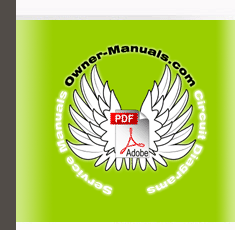|
|
|
Categories
|
|
Information
|
|
Featured Product
|
|
|
 |
|
|
There are currently no product reviews.
 ;
Great price for the manual and easy to locate on the site and download. I would buy again.
 ;
Very good copy of Manual, clear and easy to print off, arrived very promptly and reasonably priced. Thanks, I will use you again
 ;
The service manual when downloaded and printed out was clear and easy to read. The manual is complete with the schematic diagram and technical data. I occasionally require a manual and now having registered with this company I shall order from them in the future.
 ;
Great manual, great price. I am very pleased with Owner-Manuals.com, quick service, fast communication. Will definitely use this site again.
 ;
Hello from Germany - thank you very much for the manual for my Sharp "Searcher" - the handling of your internet area is outstanding..Mike
Attaching to a Stand
Attach the CY-12R/C with the optional cymbal mount (MDY series), or drum stand cymbal mount (MDS series).
Output Jack BOW/BELL
Corresponding Play Methods Bow Shot (p. 6) Bell Shot (p. 6) Choke (p. 7)
Tones Sounded Head Rim � Head Rim �
1. Use a commercially available drum key to tighten the stopper bolt.
The stopper keeps the CY-12R/C from turning, and prevents the cables from catching or getting tangled on the stand.
fig.01.e
BOW/EDGE
Bow Shot (p. 6) Edge Shot (p. 6) Choke (p. 7)
If you are using the TD-10 + TDW-1 with V-Cymbal Control,
Stopper (Be sure to orient it correctly) Tighten the bolt with a commercially available drum key
you can use both the BOW/BELL and BOW/EGDE output jacks at the same time (Three Way Triggering). For more details, refer to �If Using TD-10 + TDW-1 with V-Cymbal Control� (p. 6).
Making the Connections
2. Attach the CY-12R/C so the unit is oriented as shown in the diagram (bolt should be opposite the output jacks). 3. Tighten the wing nut to obtain the desired movement.
Use the included felt washer and the wing nut.
fig.02.e
To prevent malfunction and/or damage to speakers or other devices, always turn down the volume, and turn off the power on all devices before making any connections.
1. Use the included cable to connect one of the CY12R/C�s output jacks (either one, but not both, EXCEPT when using with the TD-10 + TDW-1 with V-Cymbal Control installed) to the drum sound module�s trigger input jack.
Connect the L-shaped plug of the included cable to the CY-12R/C. This will prevent strain from being applied to the CY-12R/C.
Wing Nut
Felt Washer
� Double sounding may occur if the wing nut is loose. � Do not use the washer or felt included with the cymbal mount (MDY series).
To make use of edge shot and choking play techniques, you'll need to connect to a trigger input jack on the percussion sound module that accommodates rim shots. The TD-8's �1/2 (KICK 1/2)� and �11/12 (AUX 1/2)� do not support rim shots.
2. Secure the cable with cable ties.
Connecting to a Percussion Sound Module (TD-6, TD-8, TD-10, etc.)
About the Output Jacks
The CY-12R/C features two different output jacks, BOW/BELL and BOW/EDGE. Use the BOW/BELL output jack when you want to play the bow and the bell sounds; use the BOW/EDGE output jack when you want to play the bow and the edge sounds.
Leave enough slack so that the cable is not pulled by any shaking or vibration of the cymbal when it is struck.
fig.CY03.e
Wind the cable tie twice
Leave some slack in the cable
Tighten it not to slip
Use either the BOW/BELL or BOW/EGDE output jack, but not both at the same time (except for the TD-10 + TDW-1 with V-Cymbal Control). Connecting both jacks results in two separate trigger inputs playing simultaneously.
Secure the cable in place with the cable tie
Turn back to fix the cable
Take care to ensure that the cable does not come into contact with the cymbal or stand. Contact between the cable and the cymbal or stand can result in problems,
5
Next
|
|
 |
> |
|
